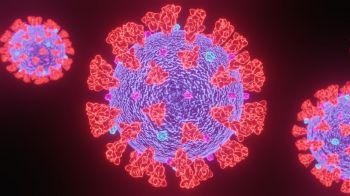
Lifting the UK lockdown in just two weeks would result in a similar number of Coronavirus deaths in a second wave as if quarantine was extended to the middle of summer, new mathematical modelling by the University of Sussex has revealed.
Changing the length of lockdown from eight, 12 or 16 weeks would change the timing for the peak of the UK's second wave of virus casualties but would have very little effect on the total number of infected, critical care cases, or deaths in the second wave, the research published on medRxiv shows.
The study's authors believe lifting lockdown in different regions at different times depending on the population demographics could save lives.
The authors' modelling also reveals the later quarantine is introduced, when it is kept for eight weeks, the bigger the reduction in deaths at the end of the outbreak compared to taking no action at all.
For an eight week lockdown introduced after ten weeks, the total number of deaths by the end of the epidemic compared to the number of deaths for no lockdown is between 7.1% and 19.5% lower. By comparison, the reduction in deaths from quarantine of equal length introduced after six weeks was only 3% at best.
Dr Yuliya Kyrychko, Reader in Mathematics at the University of Sussex, said: "The reduction in the magnitude of the peak in terms of the number of people infected and critical care cases between an eight week quarantine and a 16-week quarantine is quite small, somewhere between 5.4% and 7.4% for the number of infected and between 5% and 8% for the number of critical care cases.
"This raises the question about the practical justification of the longer quarantine when we have to bear in mind that an extended lockdown will quite likely have a very harmful impact on the country's economy, mental health, as well as disrupting vaccinations, delaying cancer screenings and treatments."
Dr Konstantin Blyuss, Reader in Mathematics at the University of Sussex, said: "Although in each case we explored, there will be a second epidemic peak after the quarantine is lifted, interestingly and quite counter-intuitively, the later quarantine is introduced, the smaller this second peak will be. This reduction becomes quite substantial for quarantines introduced at a later stage.
"Introducing an eight-week quarantine ten weeks after the start of an outbreak reduces the magnitude of the peak in infected individuals by between 45% and 59% compared to no quarantine, and this reduces to only 8.5%-23.5% for a quarantine of the same duration introduced after six weeks."
The study considered three neighbouring coastal UK regions, West Sussex, Brighton and Hove, and East Sussex which have significantly different median ages for their populations of 41.1 years, 35.6 and 42.7 respectively.
The model shows that areas with a younger population would benefit from a longer period of lockdown. A longer quarantine in Brighton and Hove made a significant difference in limiting the size of a second wave peak but little difference in West Sussex and East Sussex which would endure a second peak significantly larger than the first for the same length of quarantine.
Lockdown also has a significantly more impact in saving lives in regions with younger population, according to the University of Sussex model.
The use of quarantine will reduce the number of deaths by between 2.8% to 3.7% in West Sussex and between 4.2% and 5.5% in East Sussex. In Brighton and Hove, the impact of quarantine is an 8% to 11% reduction in deaths compared to taking no action.
Dr Kyrychko said: "A bigger impact of quarantine on reducing deaths in regions with younger population can be attributed to a number of factors, such as the fact that younger people have more contacts and thus are making a bigger contribution to disease transmission, so quarantining them makes a bigger impact on reducing the overall disease burden."
Dr Blyuss said: "The timing of when to lift lockdown may be important in determining which of the two epidemic peaks will be larger, and this is different for different regions because the pattern of disease transmission through interactions between individuals is different depending on the underlying population structure."






